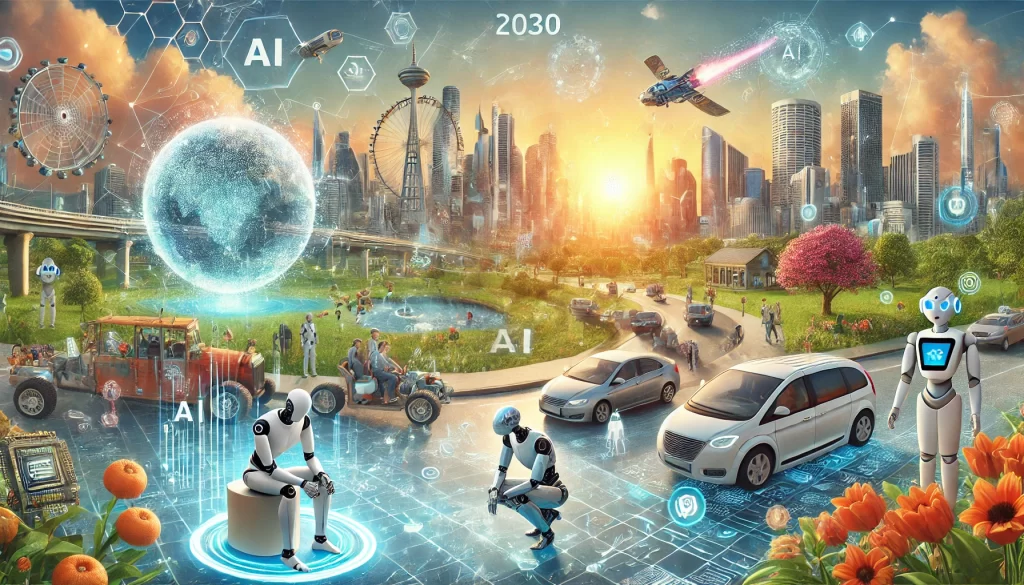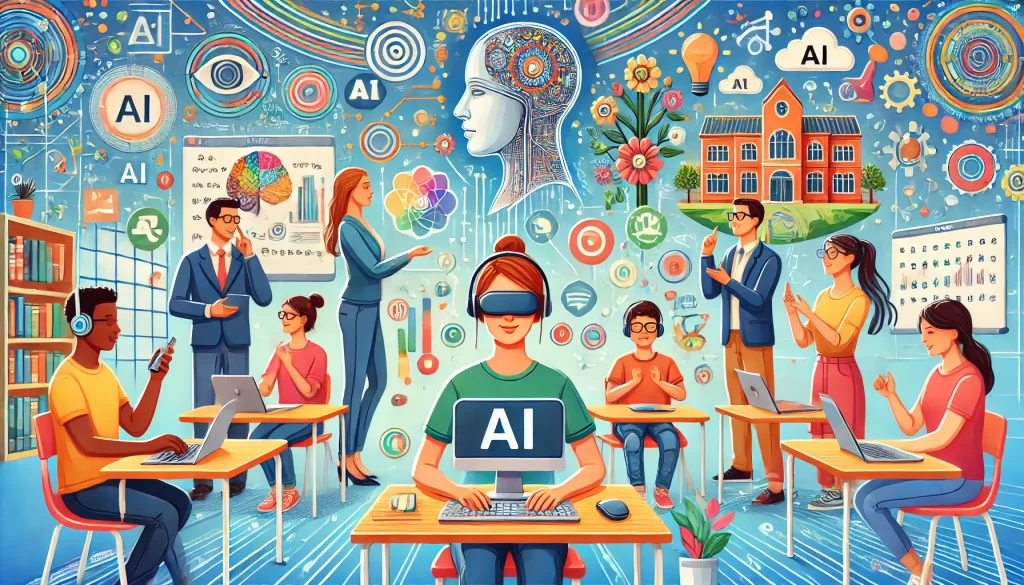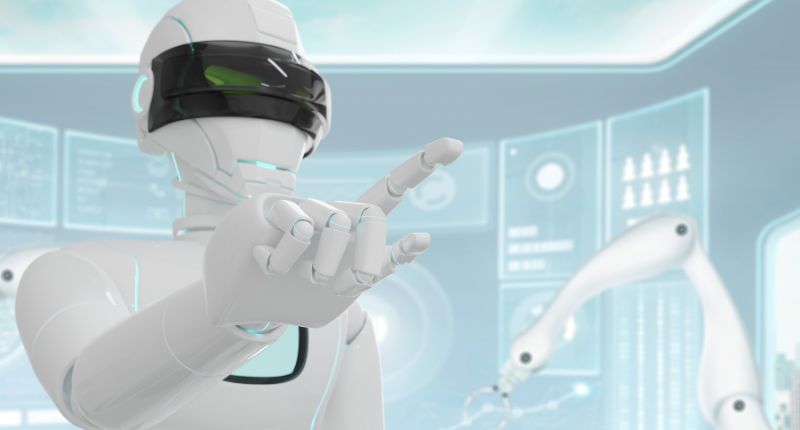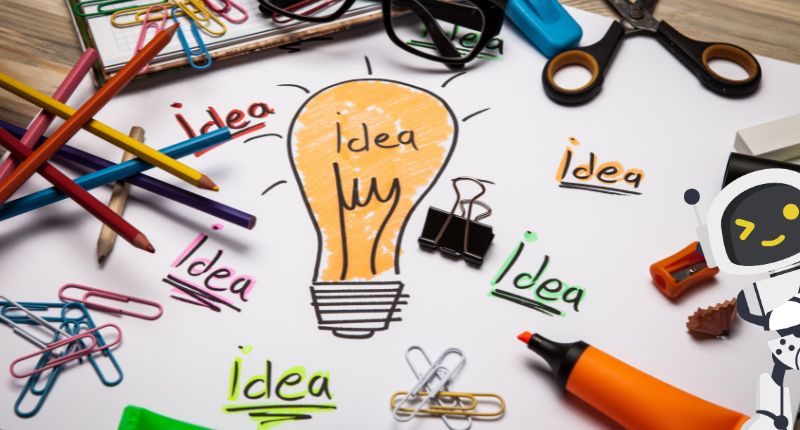Artificial Intelligence (AI) has emerged as a transformative force, reshaping industries, enhancing user experiences, and solving complex problems. Among its many impacts, one of the most significant is its role in making technology more inclusive. By addressing barriers related to accessibility, language, education, and physical disabilities, AI is bridging gaps and empowering marginalized groups around the world.
In this article, we explore how AI is fostering inclusivity in technology, highlighting examples, challenges, and the potential future of inclusive AI-driven solutions. Let’s explore How AI is Making Technology More Inclusive.
Accessibility for People with Disabilities
1. Breaking Down Barriers in Communication
AI has revolutionized communication for individuals with disabilities. For example:
- Speech-to-Text and Text-to-Speech Tools: Innovations like Google’s Live Transcribe and Apple’s VoiceOver enable individuals with hearing or visual impairments to communicate more effectively. Real-time transcription and screen readers make digital content accessible to everyone.
- Sign Language Translation: AI-powered apps and tools, such as SignAll and Microsoft’s Kinect-based translators, convert sign language into text or speech, facilitating interaction between hearing and non-hearing communities.
2. Enabling Independence Through Assistive Devices
AI-driven devices empower individuals with physical disabilities to lead independent lives:
- Smart Prosthetics: Modern prosthetics, powered by AI, adapt to the user’s movements and needs, offering enhanced mobility and dexterity.
- Eye-Tracking Systems: Tools like Tobii Dynavox enable individuals with limited mobility to control computers and communicate using only eye movements.
- Voice-Activated Assistants: Devices like Amazon Alexa and Google Assistant help users perform everyday tasks without physical input.
Bridging Language Gaps

1. Real-Time Language Translation
Language is one of the most significant barriers to communication and understanding. AI has stepped in to break these barriers:
- Translation Apps: AI-powered tools like Google Translate and Microsoft Translator offer real-time translation for text, speech, and images, supporting over 100 languages.
- Meeting Accessibility: Platforms like Zoom and Microsoft Teams integrate AI-based live captioning, ensuring non-native speakers or those with hearing impairments can fully participate in conversations.
2. Preserving Indigenous Languages
AI is also instrumental in preserving endangered languages. Projects like Google’s AI for Social Good and DeepMind’s language models are digitizing and analyzing indigenous languages, ensuring they are not lost to time.
Inclusive Education: How AI is Making Technology
1. Personalized Learning Experiences
AI tailors educational content to meet the diverse needs of learners:
- Adaptive Learning Platforms: Tools like Khan Academy and Duolingo use AI to assess a learner’s proficiency and adapt content accordingly. This ensures students progress at their own pace.
- Special Needs Education: AI-driven tools like Brainly and MathTalk provide solutions for students with learning disabilities, offering personalized support and engagement.
2. Increasing Access to Quality Education
AI makes education accessible to underserved communities:
- Virtual Tutors: AI-powered chatbots and tutors like Squirrel AI provide access to quality education in remote or underprivileged regions.
- Language Learning: AI tools democratize access to language learning, breaking down barriers for non-native speakers and immigrants.
Empowering Marginalized Communities
1. Promoting Financial Inclusion
AI is revolutionizing financial access for marginalized groups:
- Microfinance Platforms: AI-powered platforms assess creditworthiness for individuals without traditional credit histories, providing loans and financial services.
- Voice Banking: Initiatives like Kenya’s M-Pesa and India’s voice-enabled banking apps ensure even illiterate individuals can access financial services.
2. Enhancing Healthcare Access
AI-driven healthcare solutions reach underserved populations:
- Remote Diagnostics: Tools like Babylon Health and Ada Health offer AI-driven consultations and diagnostics, addressing healthcare disparities in remote areas.
- Assistive Apps: Apps like Be My Eyes connect visually impaired individuals with volunteers for real-time assistance.
Fostering Diversity in Technology
1. Inclusive Design Practices
AI emphasizes inclusive design, ensuring technology caters to diverse needs:
- Diverse Datasets: Companies like Microsoft and IBM prioritize diverse datasets, minimizing biases in AI applications.
- Representation in AI Models: AI tools increasingly reflect diverse cultures and languages, ensuring inclusivity in global applications.
2. Career Opportunities
AI expands career opportunities for underrepresented groups:
- AI-Powered Job Platforms: Tools like Pymetrics and HireVue use AI to match candidates with jobs based on skills, not biases.
- Remote Work: AI-driven collaboration tools like Slack and Asana make remote work accessible, especially for individuals in rural or underserved areas.
Challenges in Making AI More Inclusive
1. Algorithmic Bias
AI systems often inherit biases present in their training data, leading to:
- Discrimination: Biased algorithms can perpetuate stereotypes or exclude certain groups.
- Lack of Representation: Limited diversity in datasets results in AI systems that fail to serve global audiences effectively.
2. Accessibility Barriers
Despite advancements, some AI-driven solutions remain inaccessible:
- High Costs: Many assistive technologies are expensive, limiting access for low-income users.
- Digital Divide: Lack of infrastructure and internet connectivity in some regions hinders the adoption of AI-driven solutions.
Future of Inclusive AI
1. Ethical AI Development
The future of inclusive AI hinges on ethical practices:
- Transparent Algorithms: Developing explainable AI models ensures accountability and trust.
- Diverse Development Teams: Encouraging diversity in AI research and development teams helps minimize biases and foster innovation.
2. Expanding Accessibility
AI will continue to break barriers:
- Affordable Solutions: Innovations will focus on reducing costs and increasing accessibility.
- Universal Standards: Collaboration among governments, organizations, and developers will establish standards for inclusive AI.
3. Collaboration Across Industries
For AI to achieve its full potential in fostering inclusivity, collaboration is essential. Various industries must work together to ensure that AI solutions are accessible, equitable, and effective.
Collaboration in Education
Educational institutions, governments, and private organizations can join forces to:
- Develop Open Resources: AI-powered platforms offering free or affordable educational content can bridge gaps for students in underserved regions.
- Train Educators: Providing teachers with AI tools and training ensures they can support diverse learners effectively.
- Promote Lifelong Learning: AI-driven courses can equip individuals with the skills needed in a rapidly evolving job market, particularly in AI and technology-related fields.
Collaboration in Healthcare
Healthcare organizations and technology companies can collaborate to:
- Expand Telemedicine: AI-powered telehealth platforms can reach remote areas where medical facilities are scarce.
- Develop Localized Solutions: Tailoring AI healthcare tools to local languages and cultural contexts ensures they are practical and widely adopted.
- Support Public Health Initiatives: AI can help track and predict disease outbreaks, enabling timely interventions and resource allocation.
AI and Cultural Inclusivity
1. Multilingual AI Systems
As AI continues to evolve, multilingual systems are becoming more robust. These systems ensure that technology serves users in their native languages:
- AI in Customer Service: Chatbots capable of understanding and responding in multiple languages provide support to diverse user bases.
- Localization of Applications: Apps and software that adapt content based on regional languages and preferences foster greater inclusivity.
2. Cultural Representation in AI
Cultural inclusivity in AI involves creating systems that respect and reflect diverse traditions and values:
- AI Art and Creativity: Platforms like DALL-E and Runway ML showcase how AI can generate art and designs inspired by various cultural aesthetics.
- Heritage Preservation: AI is being used to digitize and preserve cultural artifacts, music, and traditions, ensuring they are accessible to future generations.
AI for Social Good
1. Addressing Poverty and Inequality
AI is playing a pivotal role in tackling global challenges:
- Predictive Analytics for Resource Distribution: AI helps allocate resources efficiently during crises like natural disasters or pandemics.
- Agriculture and Food Security: AI-driven tools assist farmers in optimizing crop yields, reducing waste, and ensuring food availability in vulnerable regions.
2. Empowering Women and Minorities
AI is empowering historically underrepresented groups:
- Entrepreneurship Opportunities: AI platforms like Shopify and Etsy use data insights to support small business owners, particularly women and minorities.
- Education and Training: AI-based platforms provide access to STEM education for girls and underrepresented groups, bridging gender gaps in technology fields.
The Role of Government and Policy
Governments play a critical role in ensuring AI is inclusive:
- Regulations and Standards: Policies that mandate accessibility features in AI solutions ensure that technology caters to diverse populations.
- Public-Private Partnerships: Collaborations between governments and tech companies can accelerate the development of inclusive AI solutions.
- Funding for Research: Grants and incentives for developing ethical and inclusive AI encourage innovation while addressing societal challenges.
Case Studies: Real-World Examples of Inclusive AI
Case Study 1: Microsoft’s Seeing AI
Microsoft’s Seeing AI app is a prime example of inclusive technology. Designed for visually impaired users, the app narrates the world around them, recognizing objects, reading text, and even identifying emotions. This empowers users to navigate their surroundings independently.
Case Study 2: Google’s Project Euphonia
Google’s Project Euphonia leverages AI to improve speech recognition for individuals with atypical speech patterns. By training AI models on diverse speech samples, the project ensures that speech-to-text tools work effectively for everyone.
Case Study 3: AI in Rural Healthcare
In India, AI-powered diagnostic tools like Niramai are revolutionizing breast cancer detection, offering affordable and non-invasive screening solutions in rural areas. These innovations save lives by making healthcare accessible to underprivileged communities.
The Ethical Imperative
1. Addressing Bias and Fairness
AI developers must prioritize fairness to prevent unintentional harm:
- Auditing AI Models: Regular audits ensure that AI systems do not perpetuate biases.
- Transparent Algorithms: Explaining how AI models make decisions builds trust and accountability.
2. Prioritizing Privacy and Security
As AI collects and processes vast amounts of data, protecting user privacy is paramount:
- Data Encryption: Robust encryption methods ensure sensitive data remains secure.
- Consent-Based Systems: Users should have control over how their data is used and shared.
Conclusion: A Future of Inclusive Innovation
The journey to making technology truly inclusive is ongoing, but the potential is immense. AI has already demonstrated its ability to break barriers, empower marginalized communities, and create opportunities for all. However, realizing this vision requires collective action, ethical practices, and a commitment to diversity.
As we continue to develop and deploy AI, the focus must remain on inclusivity. By ensuring that AI serves the needs of everyone—regardless of ability, background, or circumstance—we can create a technological landscape that reflects the best of humanity: innovation, empathy, and progress for all.
The future of technology is inclusive, and AI is leading the way. Together, we can harness its potential to build a world where no one is left behind.
Explore the future of AI and its potential impact on our daily lives in our detailed article How AI Will Transform Our Lives by 2030. Discover groundbreaking innovations that will reshape industries, communication, and the way we interact with technology.


